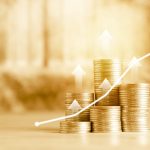President Trump: 6 Months and Beyond
 By Mihir Kapadia, CEO of Sun Global Investments
By Mihir Kapadia, CEO of Sun Global Investments
In November 2016, for most observers, a Donald Trump win was a slightly worrying possibility and a Hillary Clinton victory seemed to be the best route for economic continuity and stability. But then the unexpected happened; Trump won the Presidential Election and the market rallied strongly from the next morning onwards.
This optimism continued as Trump’s inauguration approached, with markets anticipating the sweeping economic reforms promised by his campaign. In the market, this was christened the ‘Trump Trade’, and over half a year since President Trump took office, some of the optimism seems to be showing signs of fading.
Markets were apprehensive mainly because Trump seemed to be an unknown political factor and a threat to the established order. Some people feared a similar panic to the one that swept global markets in the aftermath of the BREXIT vote.
However, with hindsight, Trump’s ascent represented a great investment opportunity for investors. His economic policies emphasised large scale infrastructure investment, significant reforms and a large stimulus which is likely in aggregate to be positive for economic growth and activity.
Trump exhibited a more conciliatory tone towards Janet Yellen and the Federal Reserve, compared with the more hostile rhetoric of the campaign. This emphasised continuity and stability and reassured the markets further.
The dollar surged to new heights and the situation seemed promising for investors who had hoped to see progress in the US economy by an administration that would not be mired in a political stalemate. Trump achieved a Republican majority in both houses, a fact which in theory increased his chances of pushing through his legislative agenda. Compared with the Obama administration which often faced a hostile and partisan Congress, the Trump administration seemed to represent a more decisive direction for the US economy with pro-growth policies and promises of tax cuts and deregulation.
These factors ensured some progress for the US dollar and for US assets. However, some more troubling questions have arisen about the administration in more recent days. It has been argued that campaign promises have not materialised, and in some cases, such as the President’s tough stance on China, these seem to have reversed altogether. In addition, the numerous scandals and controversy to have hit the White House since January have led to questions as to whether the Trump administration will be competent enough to deliver on their economic agenda.
One key event was the release of US first quarter GDP figures that showed the slowest growth in years. Although it is still early days for the Trump administration, it was viewed by some as indicating the failure of the Trump administration to boost the economy. On this view, despite the promises of tax reform and infrastructure investment, few if any of Trump’s economic policies seem no closer to fruition than they did before the election. It is this which seems to have cooled investor optimism. However, this is not the complete picture - while the US dollar has declined in 2017, US Stocks (especially the NASDAQ) have powered away and are at new all-time highs at the time of writing.
During the campaign Trump criticised the Fed for its policy of keeping interest rates low. Whilst Trump’s opinion on interest rates has varied, he has argued for a lower dollar which many see to be somewhat inconsistent with lower interest rates. Whilst the Fed has raised interest rates once this year, with officials indicating that two or three more interest rate increases were on the way, recent events have seen interest rates on hold and the likelihood of more rises this year is again under question.
Many controversies have pervaded Trump’s time in office; this did not seem to affect markets much until a flare-up of the James Comey – FBI issue which eventually rattled the stock markets and the US dollar. This soon evolved into a larger ongoing investigation into the administration’s links with Russia.
Foreign policy has also proven fraught with uncertainty, with the latest economic sanctions on Russia straining relations with the allies in the EU. Both US and European businesses have expressed concerns over the prospect of being penalised by the very same sanctions aimed at punishing Russia, due to the amount of partnerships and contributions involved. For investors, some of the allure of Trump during his time in office would appear to have faded for the time being.
However, Trump’s time in office has seen a very different story unfold within emerging markets, with its biggest loser being Mexico. The key effect was Trump’s controversial policy for a border wall between USA and Mexico for tackling illegal immigration.
Upon Trump’s victory the Mexican Peso crashed to record lows, with more details of the President’s plan hurting the emerging market’s economy – and relations with the US, further. The threat to use remittances as a tool to fund the wall, amongst other ideas, also served to threaten other Central American economies.
However over half a year since Trump’s inauguration the markets tell a very different story. The Mexican peso has become one of the world’s best performing emerging market currencies, rallying to a 14-month high since January after Trump took office. After the volatility seen at the beginning of the year, the peso has seen far more positive movement over the first seven months of Trump’s presidency. This positive sentiment has boosted other risky assets including Emerging Market Assets.
In conclusion, the Trump Presidency presented an opportunity for a resurgent US economy with comparisons made early with President Reagan’s time in office. Half a year later, Trump’s presidency has proven to be tumultuous, subverting expectations for some and confirming them for others. Although US stocks and emerging markets have gained strength, global risks for investors have also risen under the turbulent Trump administration. If this is taken as a sign of things to come, it is likely that investors will see more volatility over the next 4 years.






